21. Vainqueur – Reductions 1995-1997 (Scion Versions)
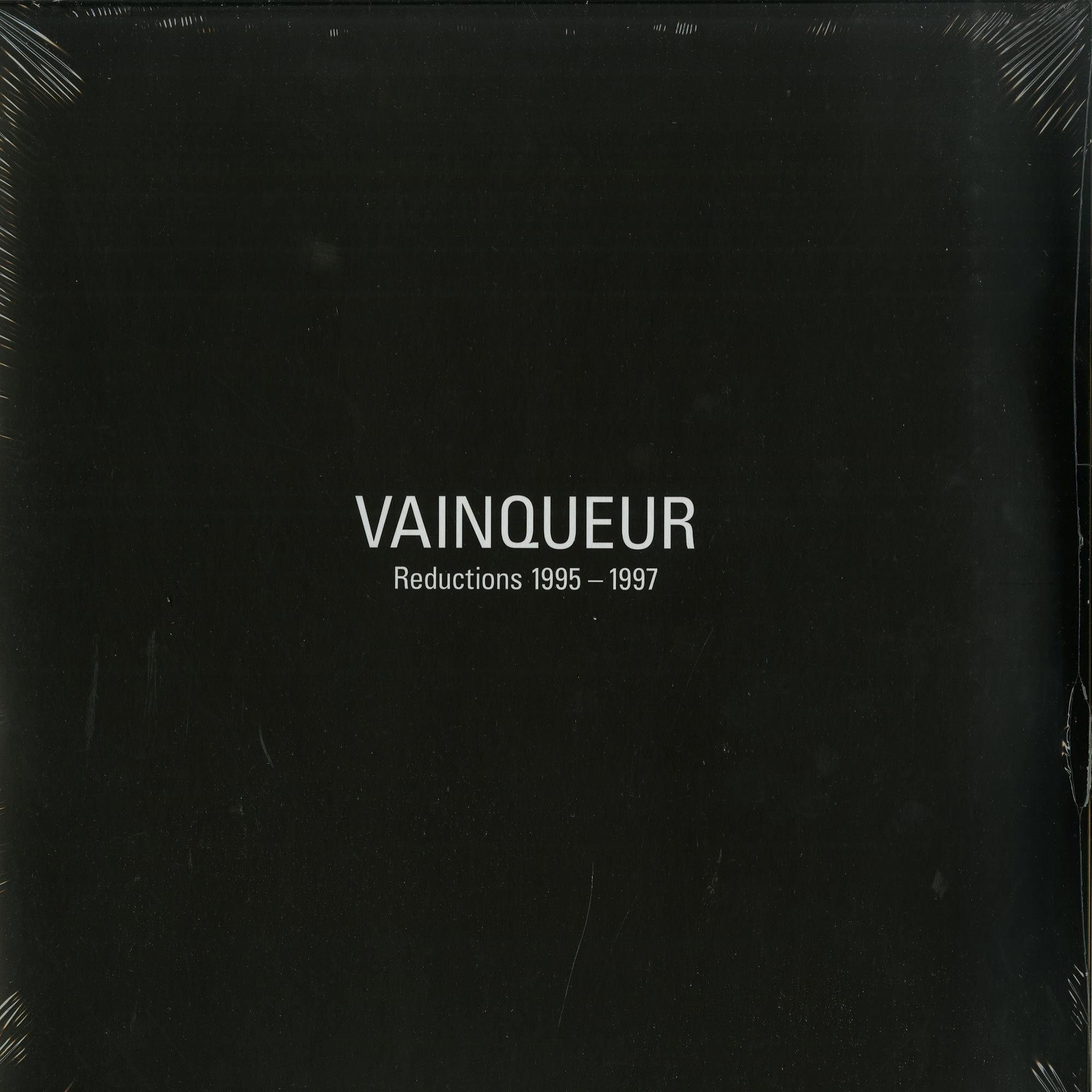
So many compilations of previously released work are redundant, but the best ones can present artists in an entirely different light. Vainqueur’s Reductions 1995-1997 is precisely curated to present the stoniest producer on the turn-of-the-millennium Chain Reaction label not as the epitome of non-committal dub-techno drift but as a formidable artist, lining up six of his most beloved pieces in a row and letting them lope for upwards of ten minutes at a time until they congeal into what feels like a great widescreen techno classic. Add a monolithic black cover and it’s clear Reductions is meant to be big. Though the definitive Vainqueur record is his excellent Elevations, one of the original Chain Reaction releases, Reductions is a testament to the power of curation, and hopefully—like Gas’s similarly fearsome Box set from 2016 or DDS’s Shinichi Atobe reissues—it’ll be enough to bring this reclusive master of chords and delay out of hiding. – David Bromfield
+ + +

+ + +
20. The Beta Band – The Three EPs (20th Anniversary Remaster) (Because Music)
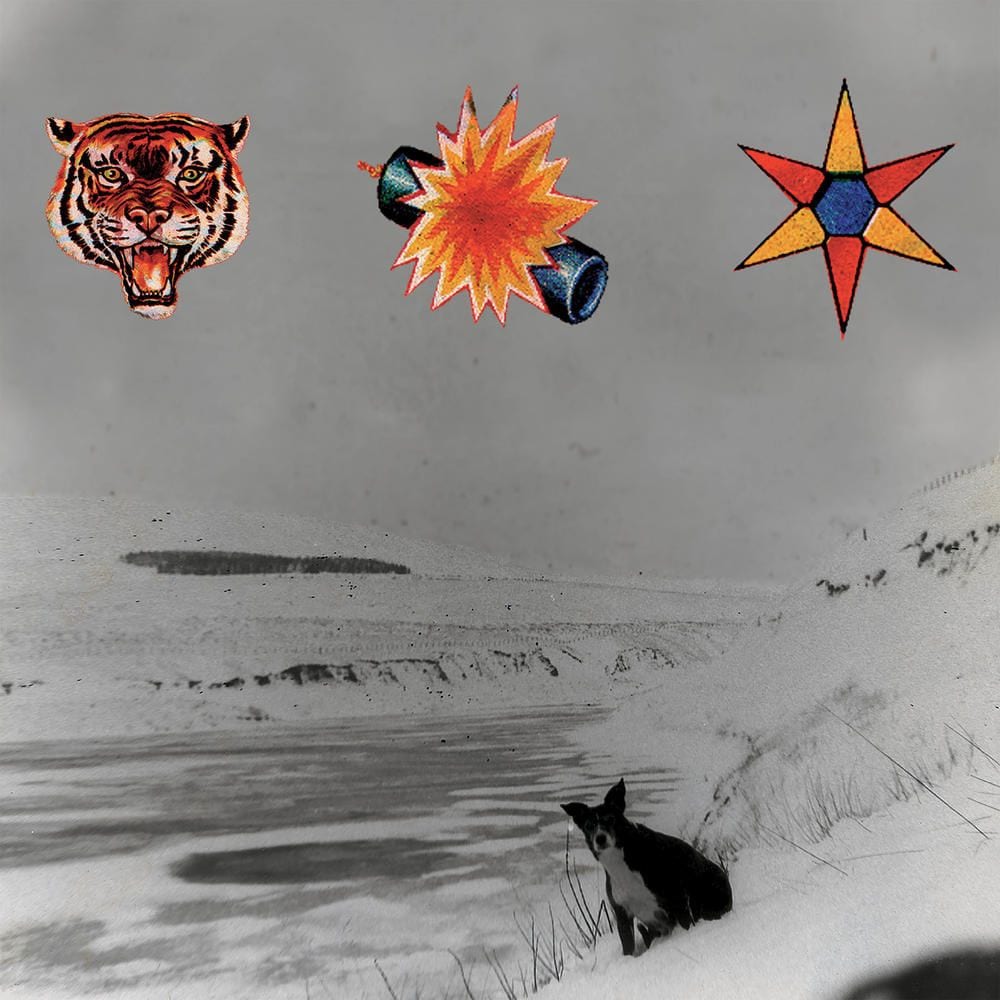
The most direct and simple reissue for the year was the 20th-anniversary collection of The Three E.P.’s first released by Scottish alternative rock band the Beta Band in 1998. With no changes made to the collection, no additional tracks or anything to expand on the original release, the reissue features only a remaster that succeeds in producing a cleaner, more dynamic sound for the album. The Three E.P.’s collected Champion Versions, The Patty Patty Sound, and Los Amigos del Beta Bandidos, from 1997 and 1998, and both separately and played in succession on the album, each of the EPs is as raw and unrepentant on this reissue. The quality of the reissue maintains the excitement and insight offered by the Beta Band in 1998, and the reissue soars from its focus on the album precisely: no frills, no distractions, no demos or alternate versions that alter the perception of any track, grooves, or riffs. The reissue celebrates The Three E.P.’s and generates a timeless reflection for the album and the unique style of the Beta Band without rooting the reissue in the 1990s or any detracting qualities. – Richard Driver
LISTEN: Spotify | WATCH: Los Amigos del Beta Bandidos
+ + +
19. Biosphere – The Hilvarenbeek Recordings (Biophon)

The fruits of Geir Jenssen’s week-long field-recording residency at the Boerderij t’Schop farm in the Netherlands were originally released in 2016 on a four-track EP, unapproved by the artist. The eight-track final version is his best album since 2010’s N-Plants, a placid and quietly awestruck ambient record that rather than dealing with the vastness of the universe zeroes in on a small parcel of land and leaves no stone unturned. As The Hilvarenbeek Recordings starts, it’s dominated by workaday farm sounds and the amplified chatter of local animals. But gradually, Jenssen gives up more and more space to amorphous clouds of synth that resemble clouds drifting overhead. By the end of the album his evocation of the quaint Dutch farm has become something more spiritual than physical, an evocation not of the landscape but of that feeling of pastoral bliss we might feel sitting on a porch and listening to the bugs buzz and the plants rustle. – David Bromfield
LISTEN: Bandcamp / Spotify / YouTube
+ + +
18. The Durutti Column – Without Mercy (Factory Benelux)
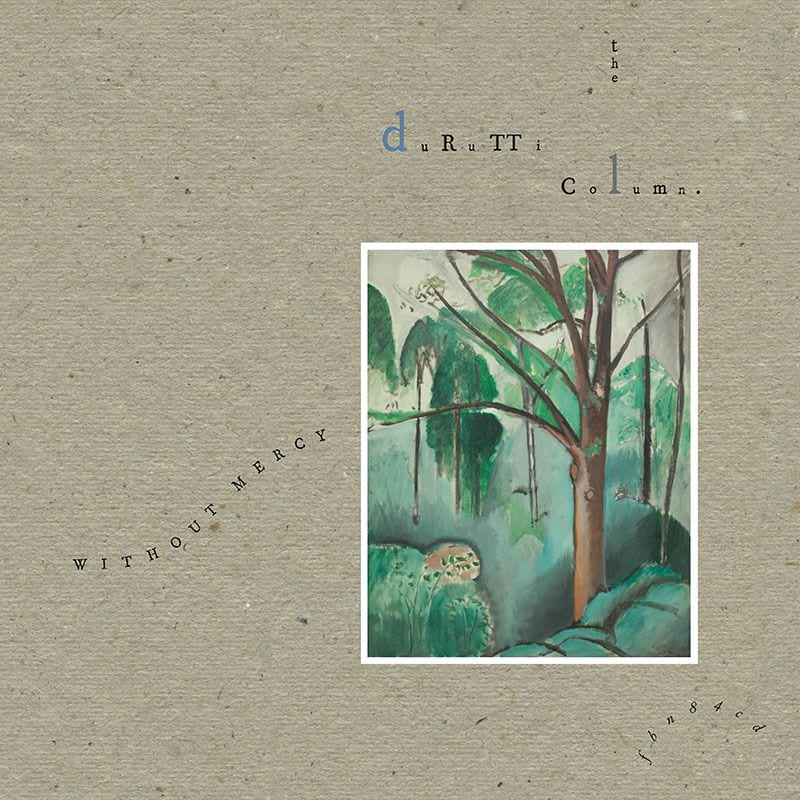
Vini Reilly’s instinctual approach to songwriting can be both stubborn and ephemeral, so in a way it makes sense that for all of the musicians from Manchester’s post-punk scene who have come and gone, the Durutti Column are one of the few still around, and yet still under the radar of so many. Reilly’s early “hits” such as “Sketch for Summer” and “Jacqueline” were intentionally fleeting pleasures, the melodies floating along with his nimble, airy approach to the guitar. In 1984, sensing a need, or at least an opportunity, for a creative change after putting out the first few Durutti Column albums, Factory Records founder Tony Wilson challenged Reilly not to go commercial, but neo-classical, with his fourth LP. The result, Without Mercy, was perhaps not exactly what either party envisioned when the proposition was made, but it remains a record capable of holding back secrets and revealing itself at its own will. Factory Benelux’s four-CD reissue provides rich context to pore over, including recordings of live sets from both London in 1984 and Oslo, Norway in 1986. – Ian King
+ + +
17. The House of Love – The House of Love (Cherry Red)
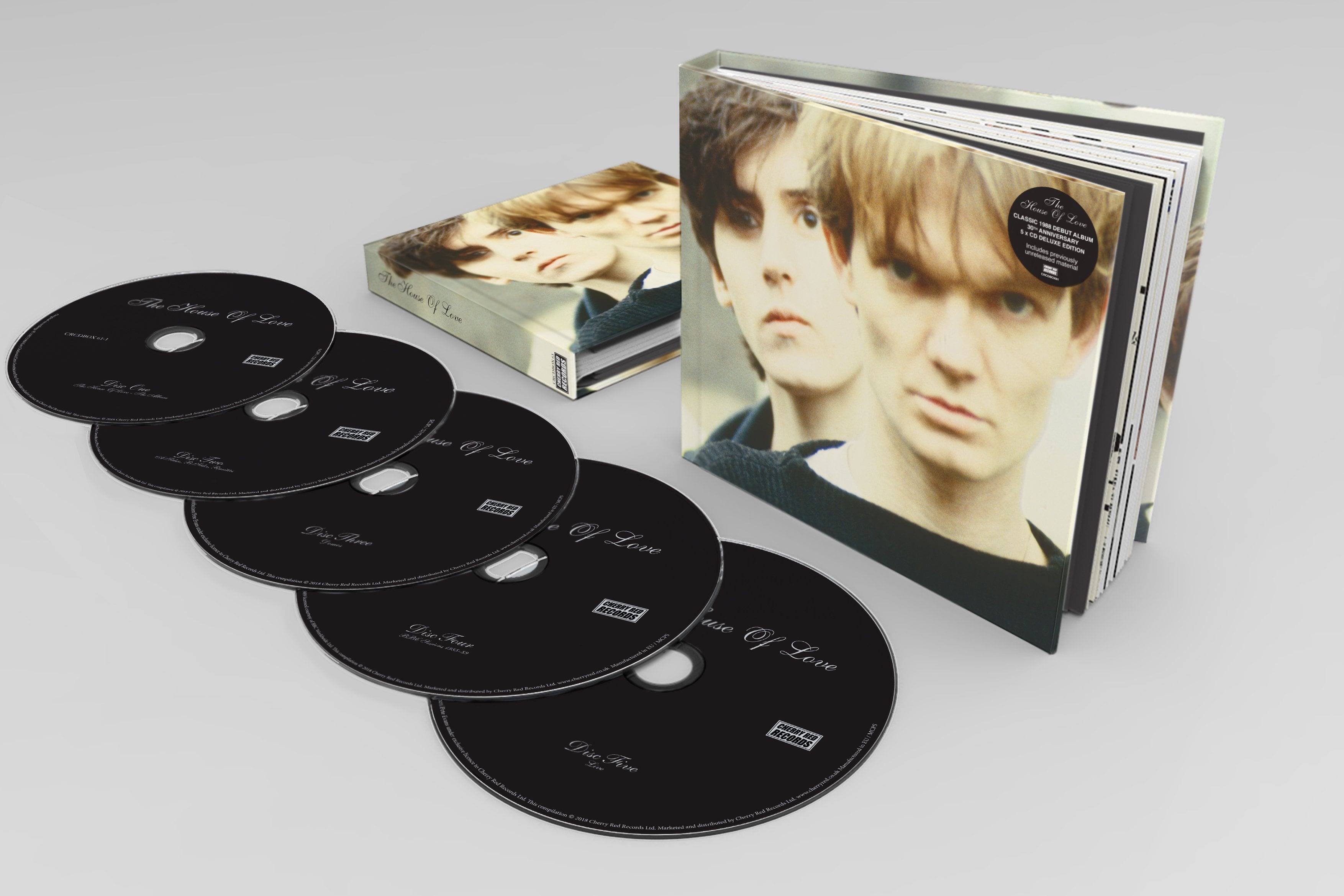
The House of Love had it all. Frontman Guy Chadwick had the cheekbones and the intensity, guitarist Terry Bickers was a mercurial loose cannon, and the tunes had a vaguely existentialist feel which appealed to undergraduates everywhere. Sadly, the factors which defined them also destroyed them, and they slipped from the public view just when they should have capitalized on their “Godfathers of shoegaze” status. Their eponymous debut album is widely held up as their best work, and Cherry Red have done a fine job in dusting it down and bolting on a stack of demos, rarities, early mixes and live stuff.
The original album is a gem. The guitars mesh together like an indie-psychedelic Television, and the ten tunes are all marvelous. “Christine” is as close to a manifesto as they over got – Chadwick croons over chiming, aggressive guitars while the melody burrows into your brain and never leaves. Quite what he is singing about is unclear, but that’s not the point. Over five CDs, the bands’ early legacy is set out for us all to admire and on hearing this music, it’s hard not to say a variation on “Why weren’t they huge?” When everyone is waxing lyrical about the Smiths, you can calmly reference the House of Love – it’s the rock snob equivalent of a mic drop. – Ian Rushbury
LISTEN: Spotify | WATCH: The Making of The House of Love
+ + +
16. Stella Chiweshe – Kasahwa: Early Singles (Glitterbeat)
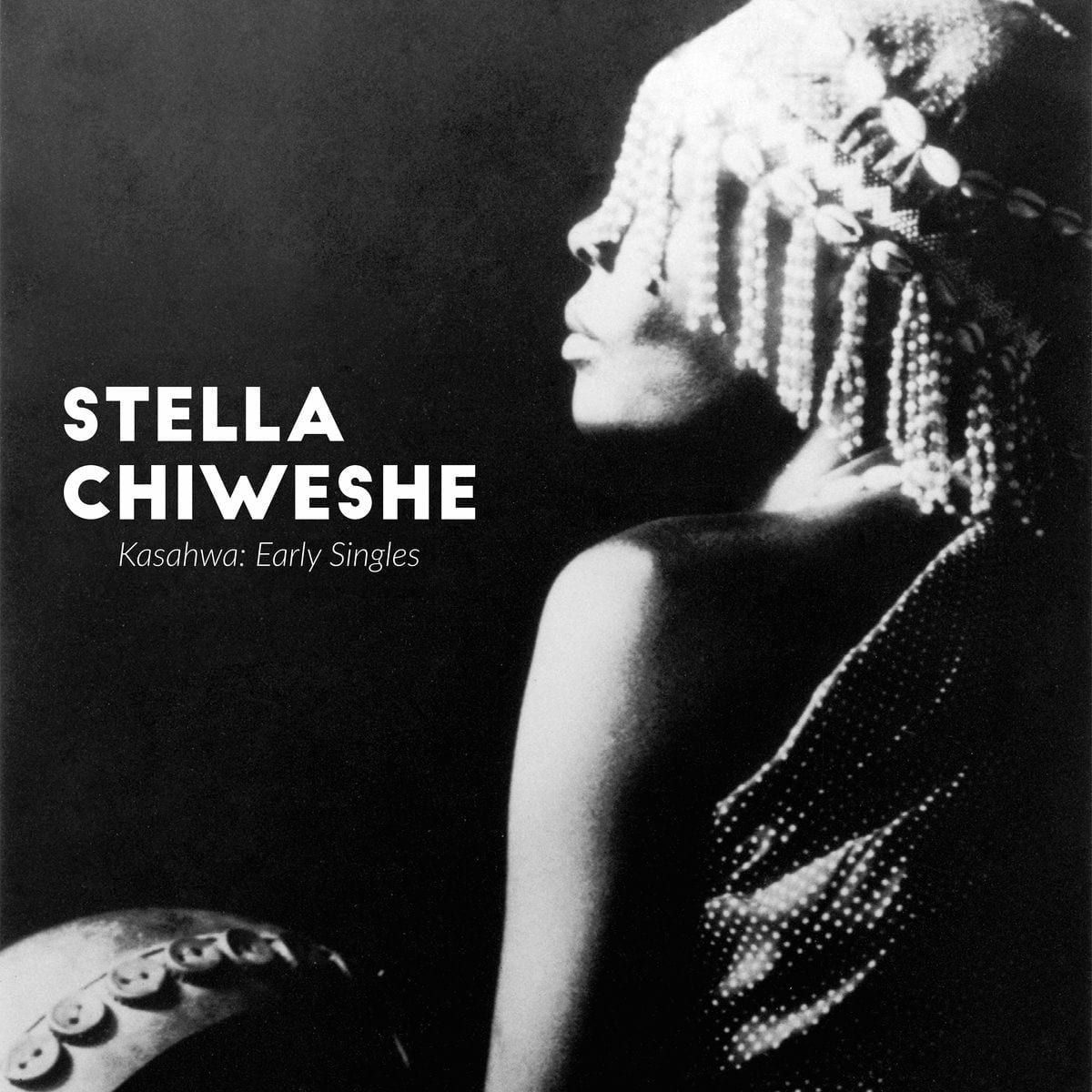
Before she was Zimbabwe’s beloved Queen of Mbira, Stella Chiweshe was a young woman in colonial Rhodesia drawn inexorably to a musical form all but forbidden to her gender. In the 1970s, she defied social conventions and began performing spiritual Shona musical traditions on borrowed instruments, quickly becoming a sensation in her homeland. On Kasahwa: Early Singles, Glitterbeat packages some of her first works, recorded between 1974 and 1983 and previously unreleased outside of Zimbabwe. The album offers new insight into Chiweshe’s raw affinity for mbira music, her thumbs blazing as they pluck out hypnotic melodies. The arrangements are simple, the patterns tight and complex. All tracks are entrancing. Remastered by Nick Robbins, the pieces on Kasahwa take their audience through a difficult time in Zimbabwe’s history – Chiweshe’s musical beginnings were in the years directly leading up to the Chimurenga revolution, and the latest pieces on the album come only a few years after the nation’s independence – and through a spectacular start to what would be Chiweshe’s legendary career. – Adriane Pontecorvo
LISTEN: Bandcamp / Spotify / YouTube | WATCH: “Mayaya (Part 1 & 2)”
+ + +
15. Metallica – …And Justice For All (Blackened)
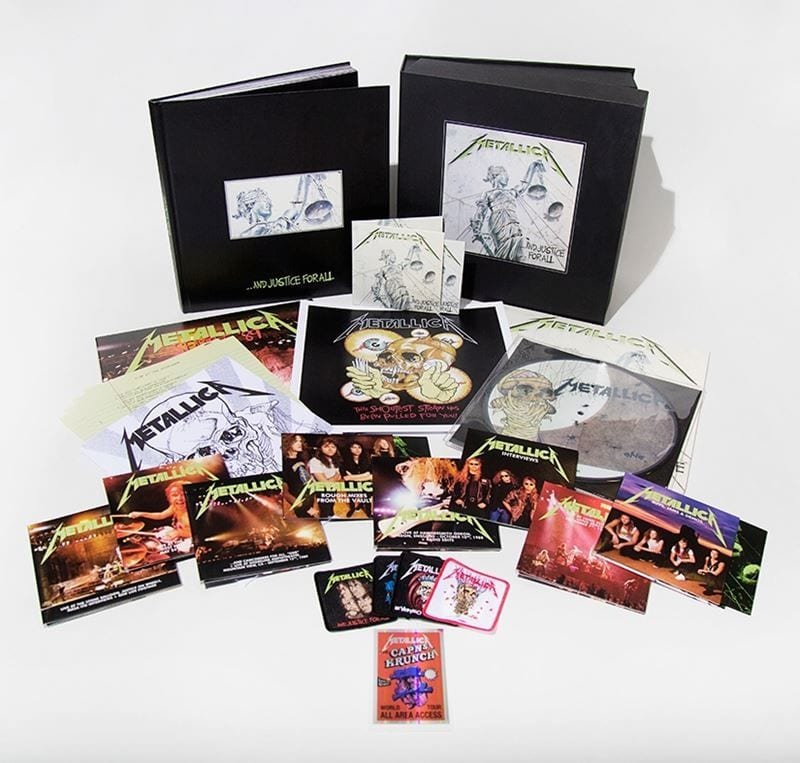
Metallica’s highly ambitious reissue project continued in 2018 with the restoration of the band’s final masterpiece, 1988’s …And Justice For All. Arriving at a time when expectations surrounding the young band were sky high, Justice turned the metal world on its ear with its staunch, rigid, antiauthoritarian, uncompromising music and attitude. With its dry production, often dizzying technicality, and the ferocious chemistry of rhythm guitarist James Hetfield and drummer Lars Ulrich, it was by no means an easy listen, but nevertheless was the band’s commercial breakthrough, bolstered by the immortal “One” (and its legendary accompanying video) and the subsequent world tour that saw Metallica headlining arenas for the first time.
Like the previous three reissues of seminal records Kill ‘Em All, Ride the Lightning, and Master of Puppets, the deluxe reissue of Justice pulls out all the stops, with riff tapes, demos, rough mixes, the remastered album, and live recordings spanning six LPs, 12 CDs, and four DVDs, as well as a hardcover book, lyric sheets, and innumerable ephemera. It’s another masterclass in classic heavy metal for any neophyte, but it’s the longtime fans who will find it most rewarding, afforded the chance to hear in minute detail how this towering classic was built, brick by painful brick. – Adrien Begrand
LISTEN: Spotify | WATCH: …And Justice for All Interview with David Fricke
+ + +
14. Love – Forever Changes (50th Anniversary Edition) (Rhino/Warners/Elektra)
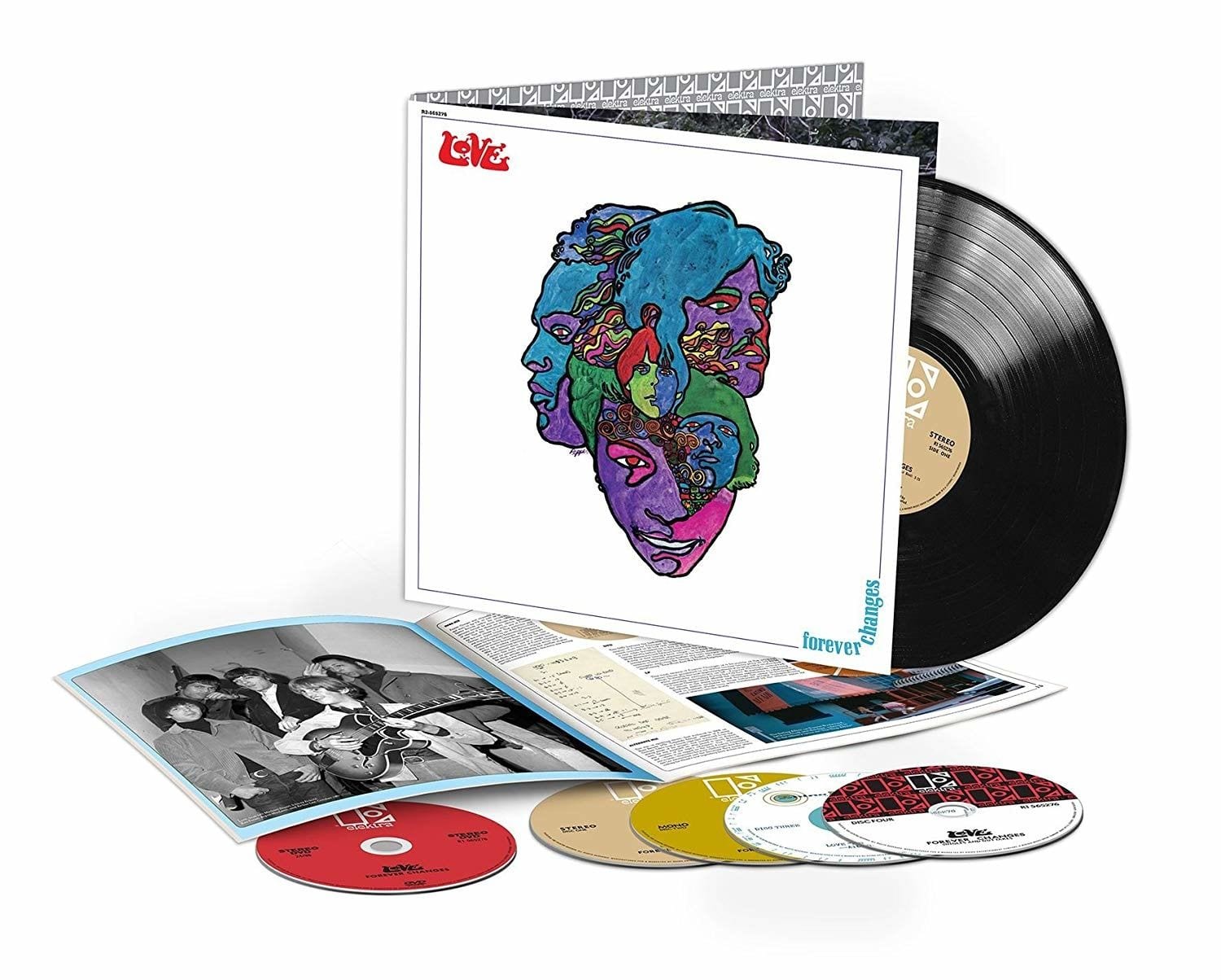
Although it charted in the UK Top 40, Love’s third album, released in 1967, took its time to become a hit. Its reputation grew year on year after it was issued on CD in the 1990s. The 2000s brought a double-disc expanded edition, but this anniversary box is the ultimate tribute to the stroke of genius that Arthur Lee experienced but could never quite repeat. Building on their brilliant second album, Da Capo, Love created a beautiful, menacing, semi-psycedelic masterpiece. It’s worth pointing out that the contributions of Bryan McLean and orchestrator David Angel helped enormously; Forever Changes wasn’t just Lee’s baby. The music works on all sorts of levels; leaving aside the big statements one can make about its cultural import and its poetry, it’s full of gorgeously catchy pop-noir moments. In a format similar to the one they’ve used for their expanded Fleetwood Mac reissues, Rhino present the album in multiple ways; stereo, mono, alternative mix, outtakes and extras, vinyl, and DVD. There are plentiful notes and photographic content. Da Capo deserves the same treatment. Maybe in 2019? – Charles Donovan
+ + +
13. Frank Sinatra – Frank Sinatra Sings for Only the Lonely (60th Anniversary Edition) (Capitol)
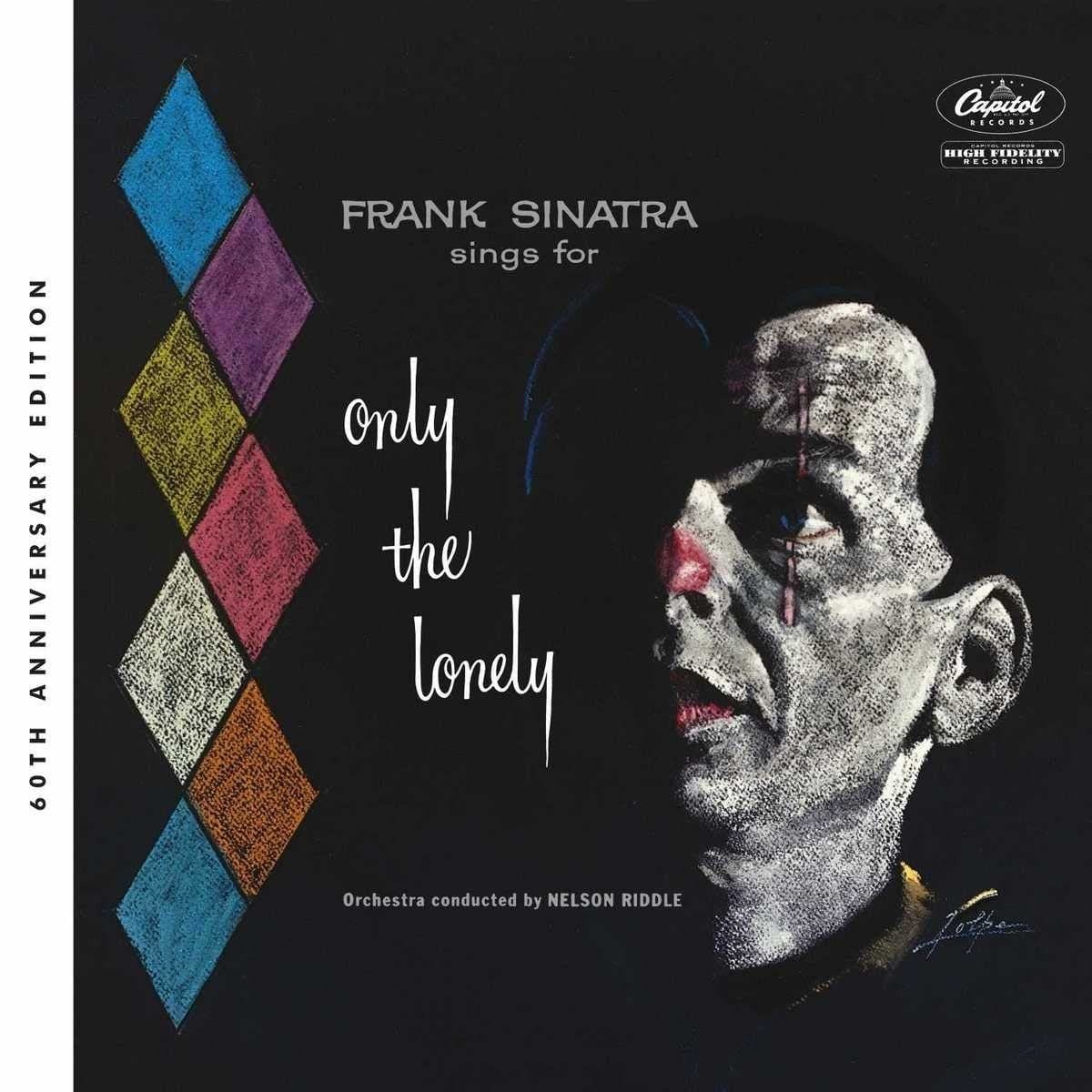
Back in 1958, Frank Sinatra made what many fans and critics consider his greatest album, Frank Sinatra Sings for Only the Lonely. The record went to number one and stayed on the charts for two years. The disc has been celebrated and available for 60 years. What’s new is Capitol Records has managed to improve the masterpiece. It is now available as a two-CD deluxe package (also available in a 180-g two-LP vinyl edition) that features the album’s remastered original 1958 mono mix with a new 2018 stereo mix. In the liner notes, recording engineer Larry Walsh explains that the original was recorded in mono and stereo with two microphones suspended high over the studio orchestra while Sinatra’s voice was recorded onto a third track.
The double CD contains four unreleased studio tracks including Sinatra’s attempt to record Billy Strayhorn’s “Lush Life”. Sinatra begins credibly enough but gets bogged down by the unusual song structure and gives up in frustration before finishing. This reveals while the Sinatra may sound natural on the rest of the disc, his artistic genius was in making it seem that way. The relaxed vibe was both a conscious and intuitive creation. This latest release of Frank Sinatra Sings for Only the Lonely only reaffirms Sinatra’s reputation as the most majestic vocalist of his time. – Steve Horowitz
LISTEN: Spotify | WATCH: Sings For Only the Lonely (Album Minimix)
+ + +
12. Fleetwood Mac – Fleetwood Mac (Deluxe Expanded Edition) (Rhino)
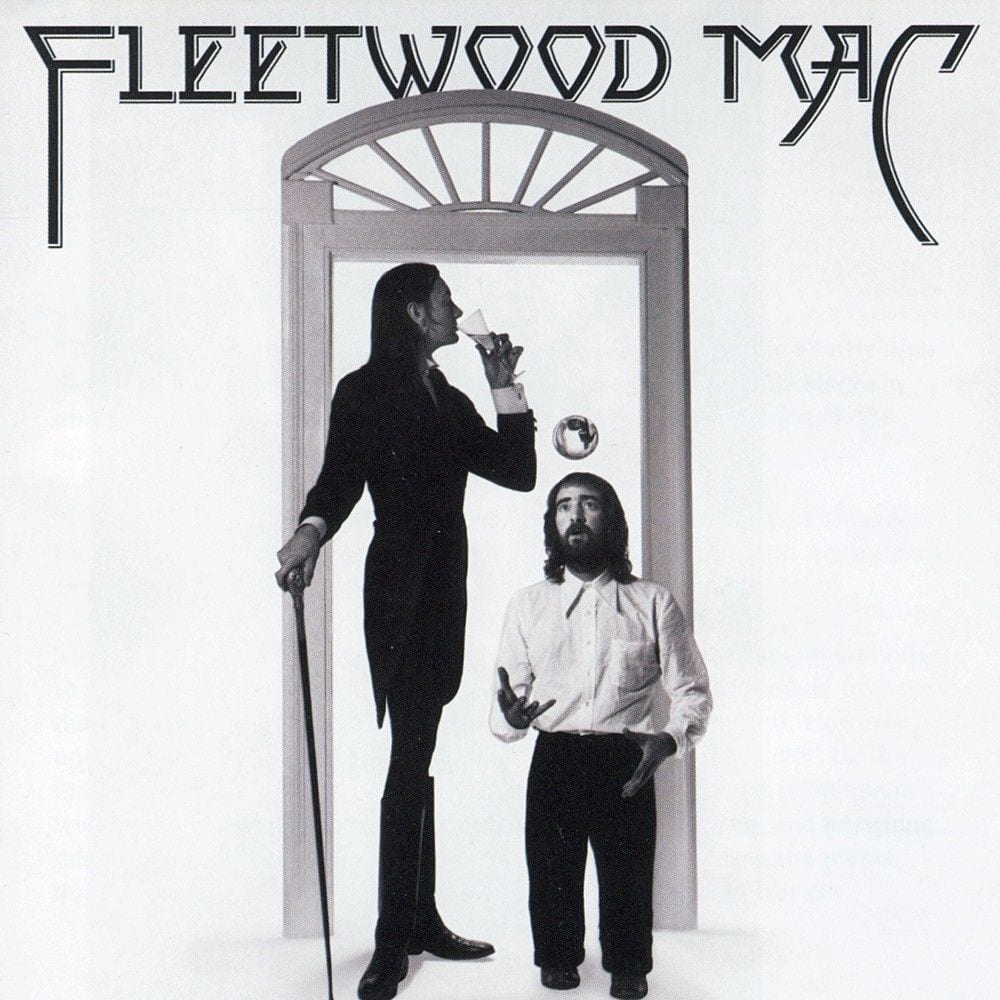
Forever the little sibling when placed alongside the world-conquering Rumours, Fleetwood Mac is well-deserving of the reconsideration that this collection invites. Even as they were still finding their feet as a new band with new creative focal points, the sound and style that would soon dominate radio airwaves and arenas across the country are very much on display. The duo of Lindsey Buckingham and Stevie Nicks make their presence known immediately with a handful of instant classics, and the environment they created allowed Christine McVie – heretofore a poppier foil for the likes of Bob Welch – to really come into her own. Even though the band were still in the process of excising their bluesier tendencies (as evidenced by the otherwise searing live set included here), the Buckingham/Nicks/McVie-led iteration of Fleetwood Mac arrived fully formed on this self-titled effort that is just as much of a classic as what would eventually follow. – Kevin Korber
LISTEN: Spotify | WATCH: Unboxing Video
+ + +
11. R.E.M. – Live at the BBC (Craft Recordings)

It’s tempting to call Live at the BBC a specialty collection, given how relatively narrow its focus is. However, it plays to the heart of who R.E.M. were at their height and how their fans appreciated them. This is, after all, one of the most bootlegged bands in the history of modern rock music; why shouldn’t they unleash this breadth of live material from the vault? What’s more striking is how the collection shows an appreciation for R.E.M.’s unheralded later material, which had a more receptive audience in Europe than it did in the U.S. Hearing the band play stately, beautiful renditions of “Imitation of Life” and “At My Most Beautiful” to a rapt audience underscores the power they still had, even as their relative popularity waned. That, combined with full concerts from their early years and their commercial dominance, make Live at the BBC surprisingly essential listening. – Kevin Korber
LISTEN: Spotify / YouTube | WATCH: “Losing My Religion” / “Nightswimming”
+ + +
10. Kate Bush – Kate Bush Remastered (Fish People/Rhino)
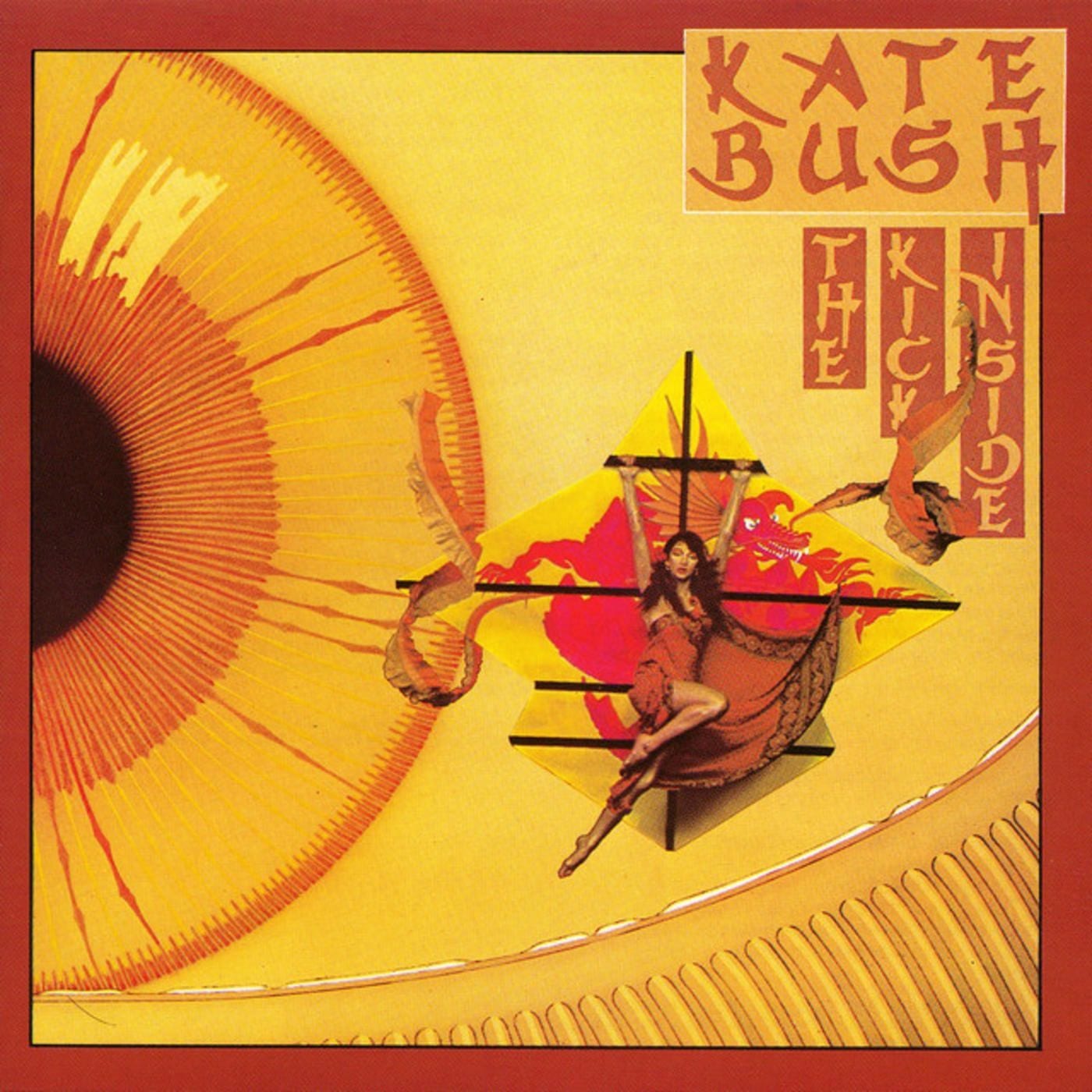
There are multiple presentation missteps diminishing the overall impact of this long-awaited remaster campaign, from misprints to design glitches to anachronistic photographs to the domineering Fish People branding to just one previously unreleased extra. And, as ever, Bush confounds the public with no promotional interviews or liner notes. But there is a saving grace – Bush has used one of the industry’s A-teams for the remastering – and her landmark albums (The Kick Inside, The Dreaming, Hounds of Love) have never sounded better. It’s arguable that, alongside David Bowie, she’s the most inventive and creative singer/songwriter (dancer/producer/pianist/synth-wunderkind) ever produced by the UK and consequently even her less favored albums (Lionheart, but it’s time that verdict was reconsidered) are better than most people’s best ones.
There have been mutterings of a Kate Bush reissue campaign for years and it’s a shame the packaging prompts such a sense of bathos. But the most important aspect – the music – has been handled brilliantly on both CD and vinyl. Consequently, this is the definitive Kate Bush not only for newcomers but also for die-hards wanting to hear what remastering engineer, James Guthrie, who handled the Pink Floyd catalogue, has made of Bush’s work. – Charles Donovan
+ + +
9. Tom Petty – An American Treasure (Reprise)
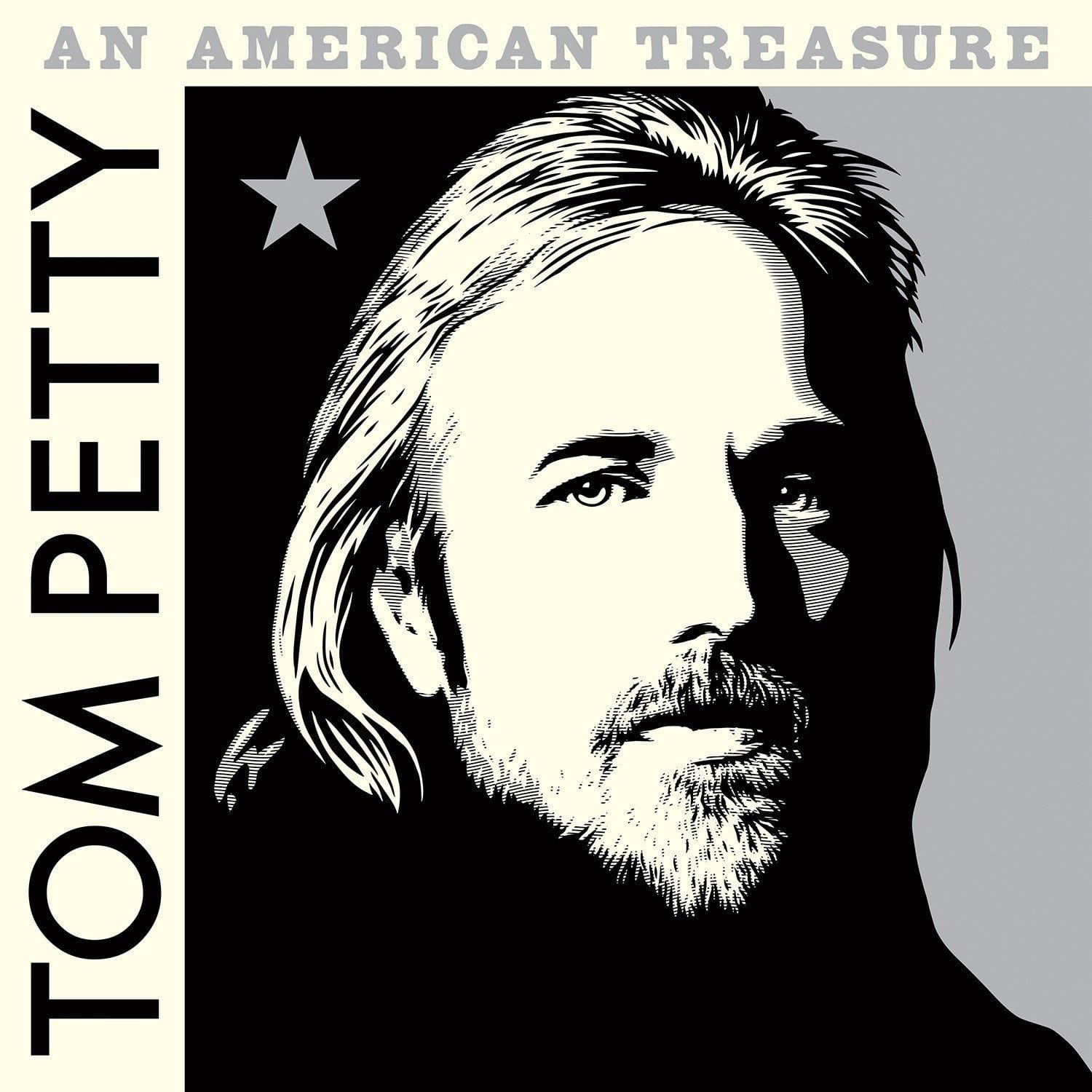
It’s a mystery that Tom Petty was regarded of a “singles” artist, and not an “album” artist by critics, and even casual fans. It’s one of the reasons why his greatest hits collection is so beloved. It’s even a bigger mystery given that he and his band the Heartbreakers were responsible for three of the best sounding rock albums ever: Damn the Torpedoes, Full Moon Fever, and Wildflowers. Petty’s studio perfectionism is beautifully reflected on An American Treasure, which was curated by both his family and bandmates. Even with a previous six-disc box set of outtakes and rarities (Playback), there was still enough material to house this latest collection – much of it would have worked just fine on Petty’s full-length albums.
“The Apartment Song” is further proof that Tom Petty and Stevie Nicks were one of the best duos in rock when they crossed paths. “Lonesome Dave” is a bracing jolt of bar band boogie that makes you wonder what kind of album Petty could have churned out of if he could have dedicated one album to just “rocking out” over studio perfection. An American Treasure is just that – a tribute to an artist whose understated songwriting was just as stellar as the hooks that went along with them. – Sean McCarthy
LISTEN: Spotify / YouTube | WATCH: “Gainesville” / “Keep a Little Soul”
+ + +
8. David Bowie – Loving the Alien (Rhino)
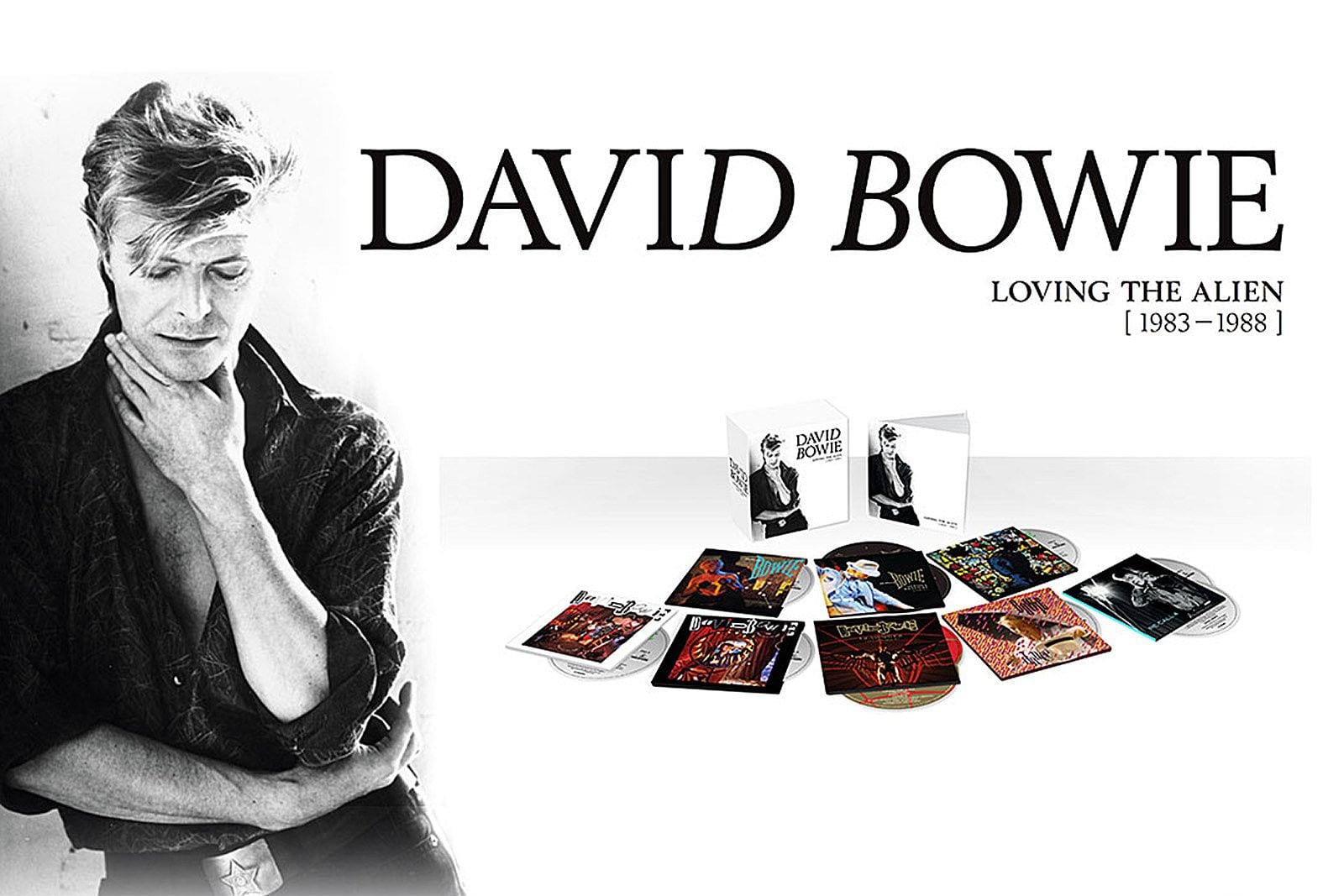
The ’80s were not kind to a lot of established musical artists, and even a gifted chameleon like David Bowie was not safe. While he seemed to hit his commercial stride in 1983 with the pop smash Let’s Dance, it was followed up with what’s generally regarded as the worst one-two punch of his career – Tonight (1984) and Never Let Me Down (1987). Undeterred, Rhino continued their retrospective boxed set series of Bowie’s work by spotlighting this problematic era with Loving the Alien (1983-1988).
In hindsight, it’s easy to see why Let’s Dance was such a huge hit – generous pop hooks, lively production from Nile Rodgers, bluesy guitar leads from then-unknown Stevie Ray Vaughan – but the set is also a great opportunity to revisit the other two albums, which have plenty of highs (“Blue Jean”, “Loving the Alien”, “Time Will Crawl”) amongst the cringe-inducing lows. Plus, there’s a ton of bonus material here to keep Bowie fans of all stripes busy, including live discs, remixes, one-off singles and a generous helping of soundtrack work from the period. Completists will eat this stuff up, but Loving the Alien is also a helpful and enjoyable reassessment for casual fans. – Chris Ingalls
LISTEN: Spotify / YouTube | WATCH: “Loving the Alien”
+ + +
7. Liz Phair – Girly-Sound to Guyville (The 25th Anniversary) (Matador)

Nevermind, OK Computer, and The Chronic are routinely mentioned in “Best Albums of the ’90s” discussions. But Liz Phair’s Exile in Guyville beats out all three for the sole reason that it managed to capture so much of that decade’s strongest musical elements, from its DIY production value to its direct, confessional songwriting; so much of which has been quoted enough to make it quality as classic rock. Exile in Guyville was a watershed moment in rock because few debut albums have ever sounded so confident and realized. Of course, for an album that groundbreaking, there had to be a genesis. And Girly-Sound to Guyville supplies that material.
Recorded in 1991, Phair was in a position like many recession-ravaged post-college graduates. “Hello Sailor” hints at one of her stock in trades of pairing childhood nursery rhymes with lacerating lyrical honesty. These early recordings not only secured her an album deal with Matador, but also ended up on her subsequent albums. Far from a nostalgic victory lap, these three demos more than merits another purchase of this genre-defining work. – Sean McCarthy
LISTEN: Spotify | WATCH: “Divorce Song” / “Never Said”
+ + +
6. John Lennon – Imagine (The Ultimate Collection) (Capitol)
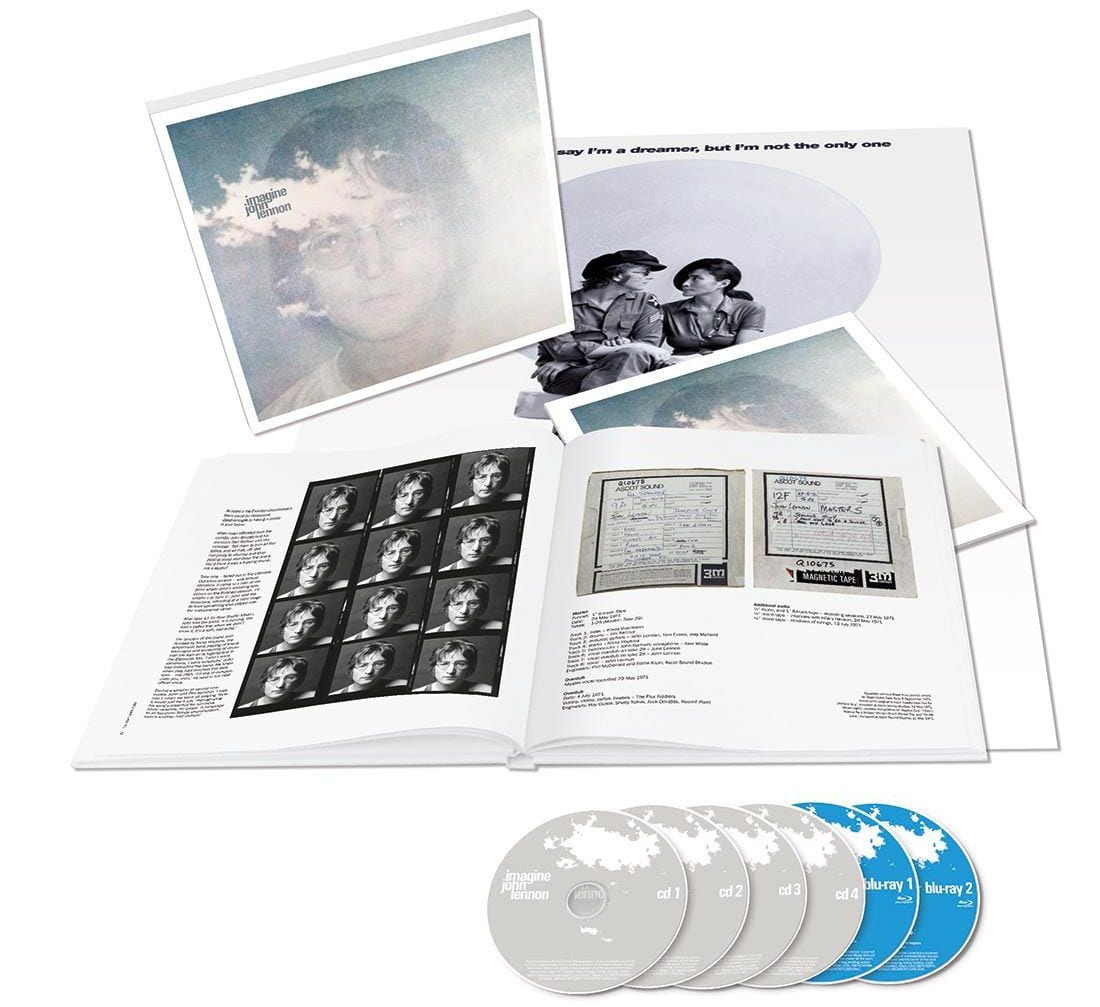
Arriving just ahead of the 50th anniversary of The Beatles (“White Album”) and the in-depth exploration of that album, Yoko Ono oversaw the remastering and remixing of John Lennon’s second solo album, 1971’s Imagine. The Ultimate Collection is immersive and immense, building upon the sincerity and professionalism of the original album with outtakes, demos, and unique “Evolution Documentary” tracks that depict the building and mixing of each track from the studio perspective. The reissue additionally featured two Blu-ray discs of the materials in the Ultimate Collection, as well as the Imagine film and “Gimme Some Truth” documentary.
Considering the focused approach and strong outcome of Lennon’s 1971 album, ranging from the career-defining “Imagine” to confessional tracks like “How?” and “Oh Yoko” and to the bitter attack on Paul McCartney in “How Do You Sleep?”, the Ultimate Collection edition succeeds through a commitment to Lennon’s vision. The massive reissue highlights the original album and Lennon’s vision by focusing on his approach to recording Imagine, the elements and strength in the songs included, and Lennon’s confidence and voice from the early 1970s. The result is a fresh take that ironically rubs against McCartney’s success with Egypt Station and illustrates Lennon’s creative and emotional relationship with Ono that first emerged in the songs written and recorded for The Beatles. – Richard Driver
LISTEN: Spotify / YouTube | WATCH: “How Do You Sleep?”
+ + +
5. Bobbie Gentry – The Girl From Chickasaw County (The Complete Capitol Masters) (Universal)
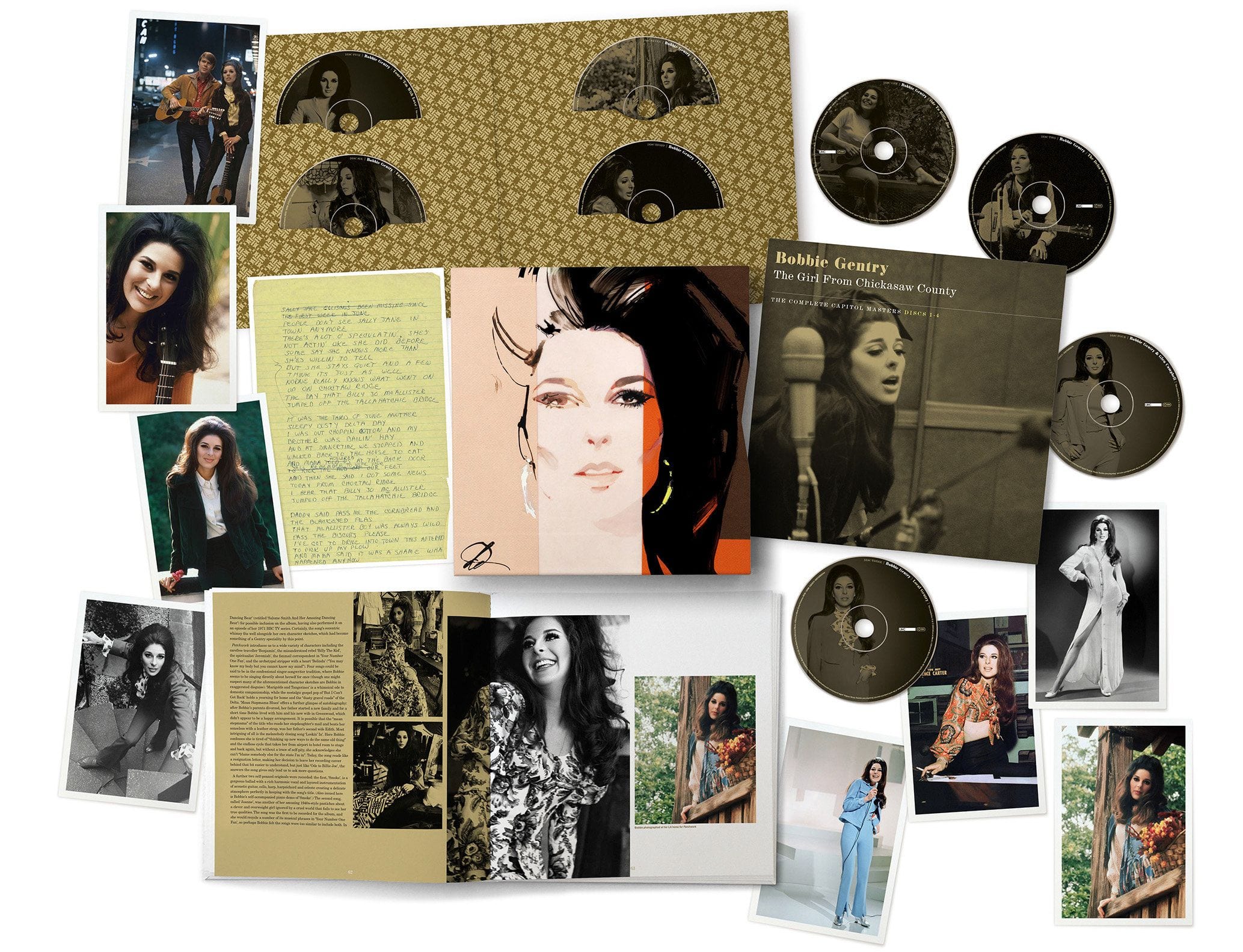
Not only does this eight-disc collection have outstanding sound quality, but it’s also 2018’s most beautifully-presented reissue, housed in a David Downton-illustrated box, with photographic postcards and an accompanying hardback. It’s also single-handedly restoring Gentry’s reputation. She was never just a Vegas hoofer (although she could fulfill that role with consummate skill). Nor was she the one-hit-wonder that lazy writers sometimes call her. As her three self-written albums (Ode to Billie Joe, The Delta Sweete, and Patchwork) prove, she was a singer/songwriter/producer to whom music history should be far more favorable.
Compiler/producer Andrew Batt has gathered all seven Capitol albums, a vast array of extras, 75 previously unissued tracks, an unreleased jazz album, and a Live at the BBC set, making this by far the best treatment Gentry’s work has ever had. From her smoky voice to her story-songs (“Fancy”, “Ode to Billie Joe”) blending country, pop, and soul, Gentry was a singular talent. This groundbreaking presentation should be enjoyed in physical form, accompanied by Batt’s formidably researched notes. If only every artist’s catalog were treated with such style, quality control, and intelligence. – Charles Donovan
+ + +
4. Prince – Piano & A Microphone 1983 (Warner Bros.)
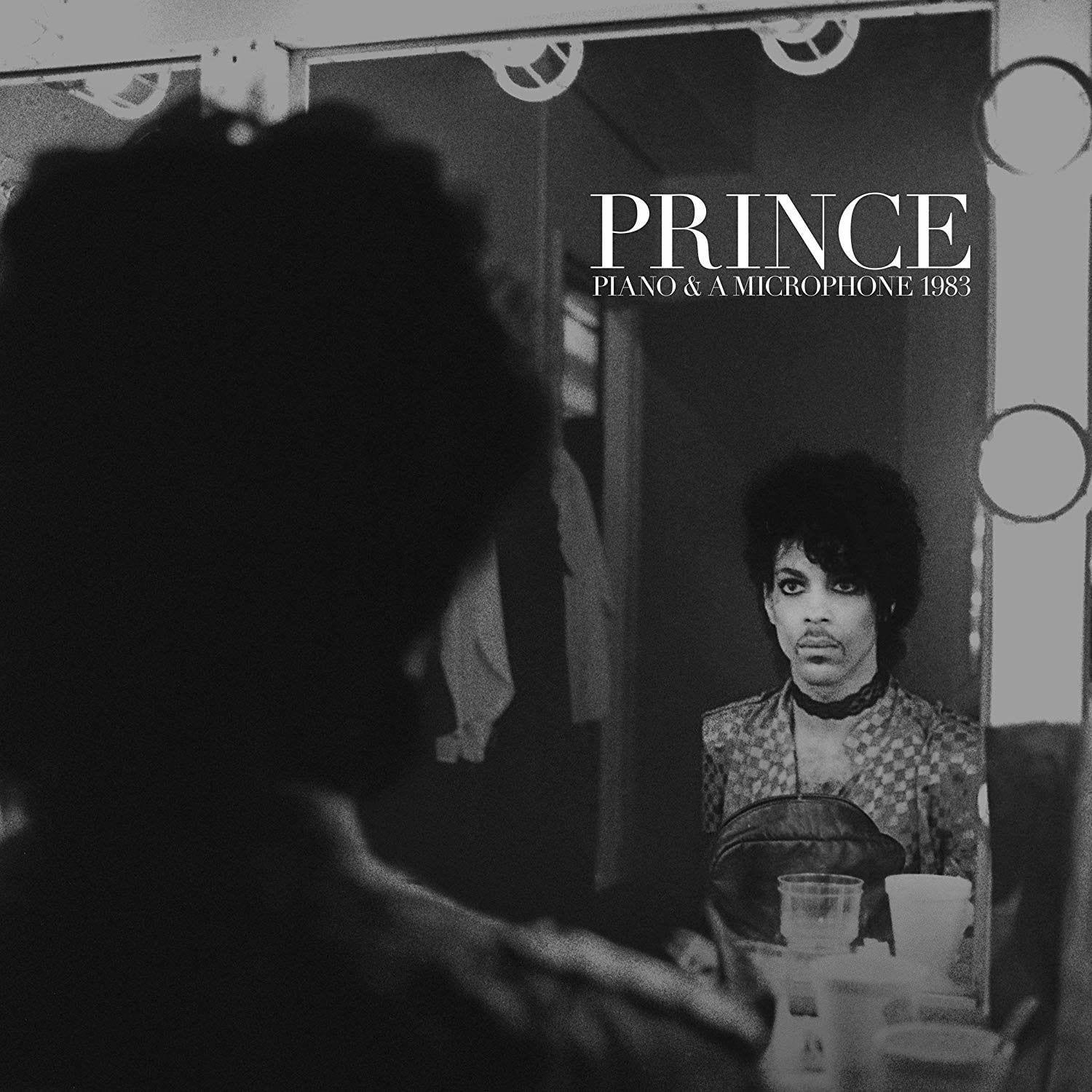
Piano & A Microphone 1983, the inaugural release from the vaunted Prince vault, is some of the most bizarre and beguiling music we’ve ever heard from the Purple One. His piano is a rhythmic engine, and his voice is abstract and garbled, more like the exhortations of Keith Jarrett or Joseph Spence than the “skinny motherfucker with a high voice”. Piano & A Microphone is ostensibly meant to give us an insight into how he put the music from his classic Purple Rain period together. But it raises more questions than it answers. Is “Why the Butterflies” an unfinished sketch or a cryptic abstraction? What is the “black mouse” on Cold Coffee & Cocaine? Is that astonishing version of “International Lover”, which eliminates the tongue-in-cheek Lothario strut of the original in favor of a halting and sincere declaration of puppy love, a minimalist reduction or a mere warm-up? There’s something voyeuristic about putting out an unfinished rehearsal tape to kick off the Vault reissue campaign, but it’s refreshing to know his music still lives in mystery. – Daniel Bromfield
LISTEN: Spotify / YouTube | WATCH: “Mary Don’t You Weep”
+ + +
3. The Posies – Frosting on the Beater (Omnivore Recordings)
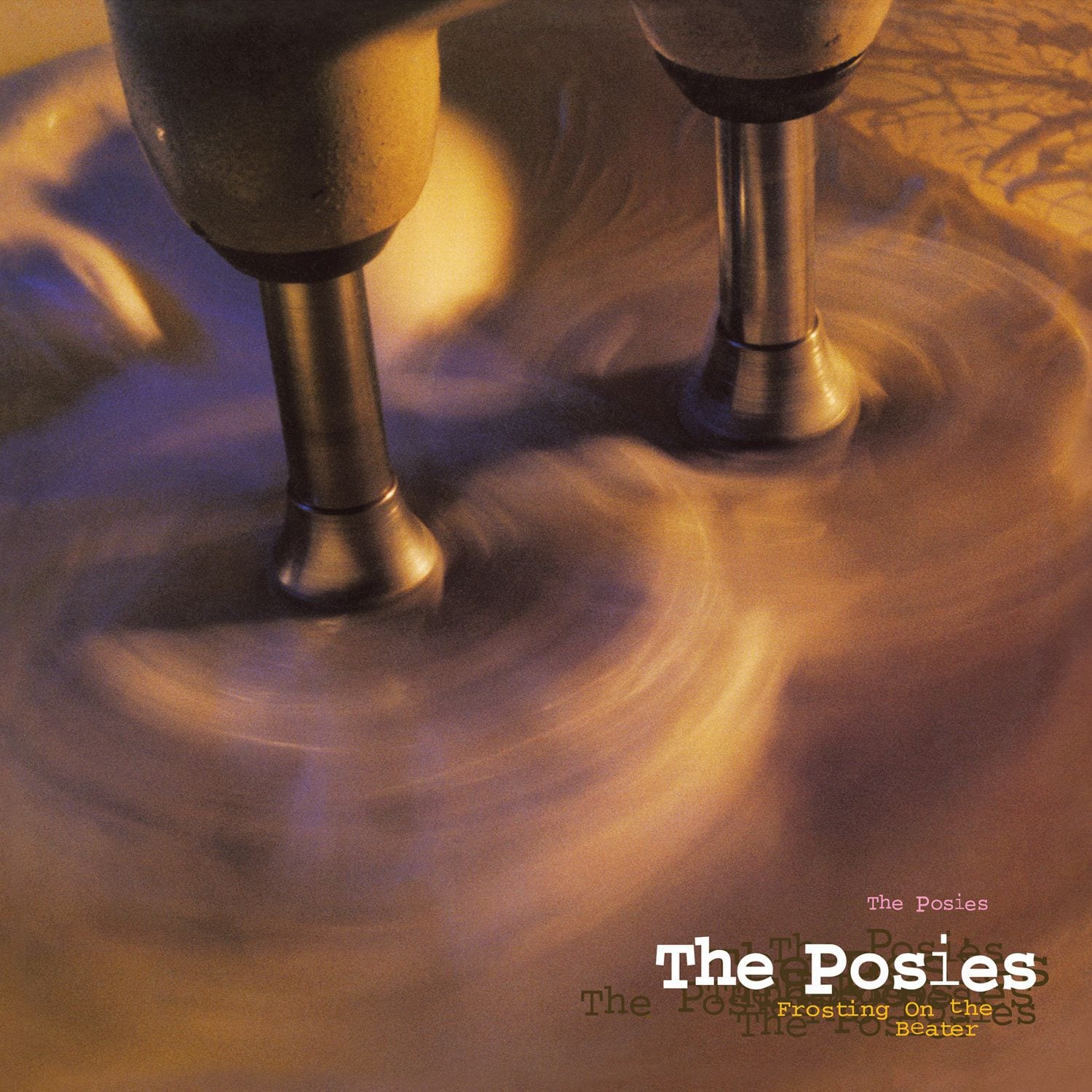
Frosting on the Beater was the third album by the Posies and the one which accidentally placed them on the fringes of grunge. That’s a weird place to be for a band who owe more to the Zombies and the Hollies than to Blue Cheer or the Stooges. Producer Don Fleming coaxed a set of confident, aggressive, but always tuneful performances from the band, whose previous album had a whimsical, almost psychedelic feel. The gloves are off here and songs like “Dream All Day”, “Solar Sister”, and “Definite Door” combine unhinged, righteous guitar lines with McGuinn, Clark, and Hillman harmonies. If you were slightly wary of those rather disheveled looking, plaid-clad bands with evil intent in their eyes, the Posies were the perfect gateway drug. Did someone say “pop sensibility?” Well, they were right.
Even at their most intense on tunes like “Lights Out” there’s still a tune you can whistle while the guitars give you terminal tinnitus. As with all Omnivore reissues, the 2018 version of Frosting on the Beater looks stunning and is loaded with tasty extras, not that any are needed. This record already stands head and shoulders above most of the albums released in the first half of the 1990s. There was way more to American guitar-based rock than Nirvana in that almost forgotten decade, and the Posies proved that in spades. – Ian Rushbury
+ + +
2. Bob Dylan – More Blood, More Tracks (Columbia/Legacy)
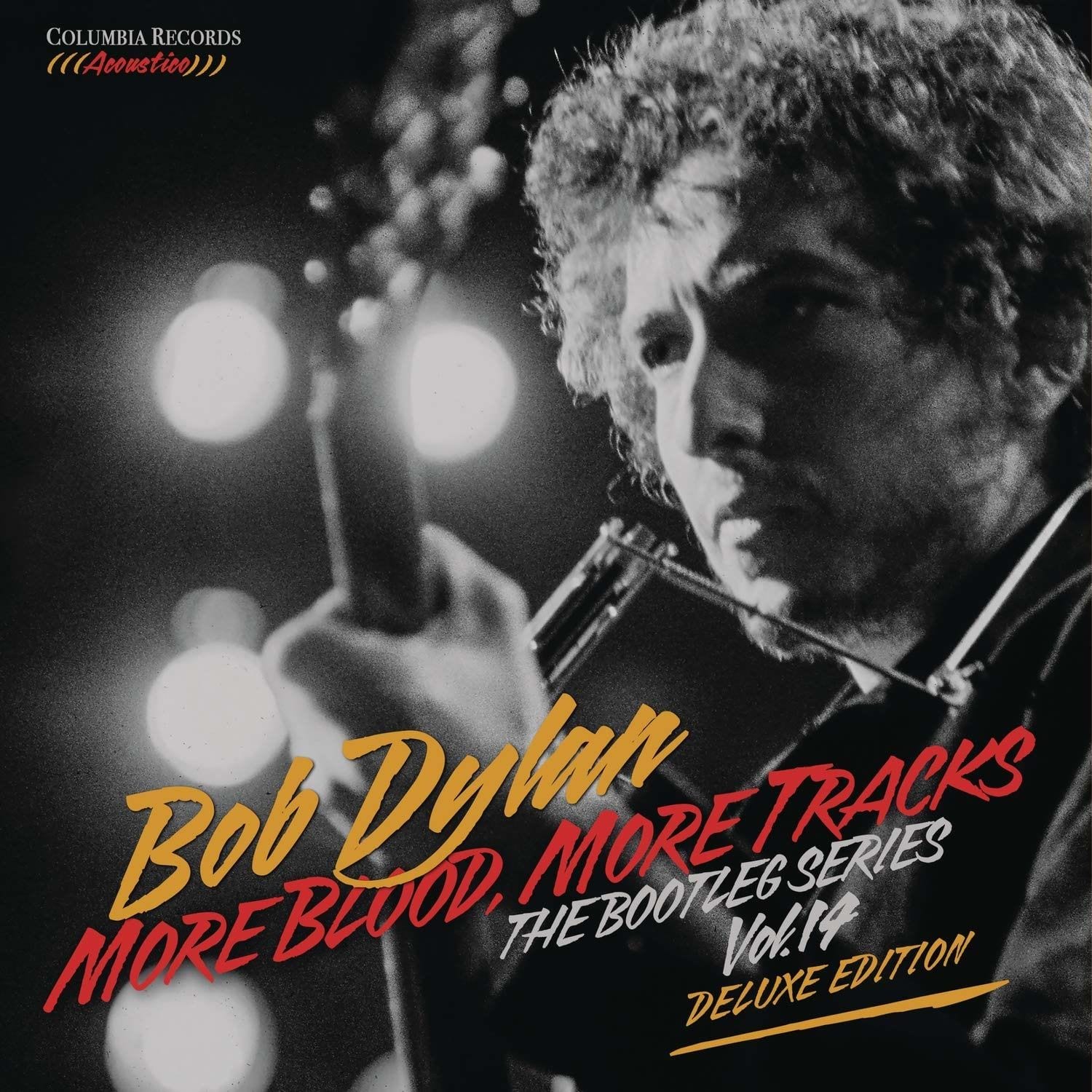
There are two editions of More Blood, More Tracks: A one-disc (or LP) regular edition, or a six-disc deluxe edition. If you are a Bob Dylan fan of any stripe, you know exactly which of the two was built for you, but the good news is that both deliver beautifully. The idea behind More Blood, More Tracks is the offering of a window into the studio during the recording of Dylan’s celebrated Blood on the Tracks album, and the one-disc version gives us an alternate take on the entire album, with the bonus inclusion of the excellent “Up to Me”, a song previously relegated to compilations. “Tangled Up in Blue” is mellower, “Shelter from the Storm” is like a runaway train, and so on.
Dylan had a way of being able to apply a set of lyrics to a variety of settings until he found one that fit, and while you’ll rarely consider one of the alternate versions to be the definitive version, every single one is interesting — and the sound quality is immaculate — for anyone familiar with the original. Completists, of course, will adore the six-disc edition, which applies that perfect sound to almost every take of every song recorded at those sections, presented in chronological order. Do you need 11 versions of “You’re Gonna Make Me Lonesome When You Go”? Probably not. Is it fascinating to hear all of them just to hear how it developed over the course of September 16 and 17, 1974? Absolutely. – Mike Schiller
LISTEN: Spotify | WATCH: “If You See Her Say Hello” / “You’re a Big Girl Now”
+ + +
1. The Beatles – The Beatles (The White Album) (50th Anniversary Edition) (Capitol)
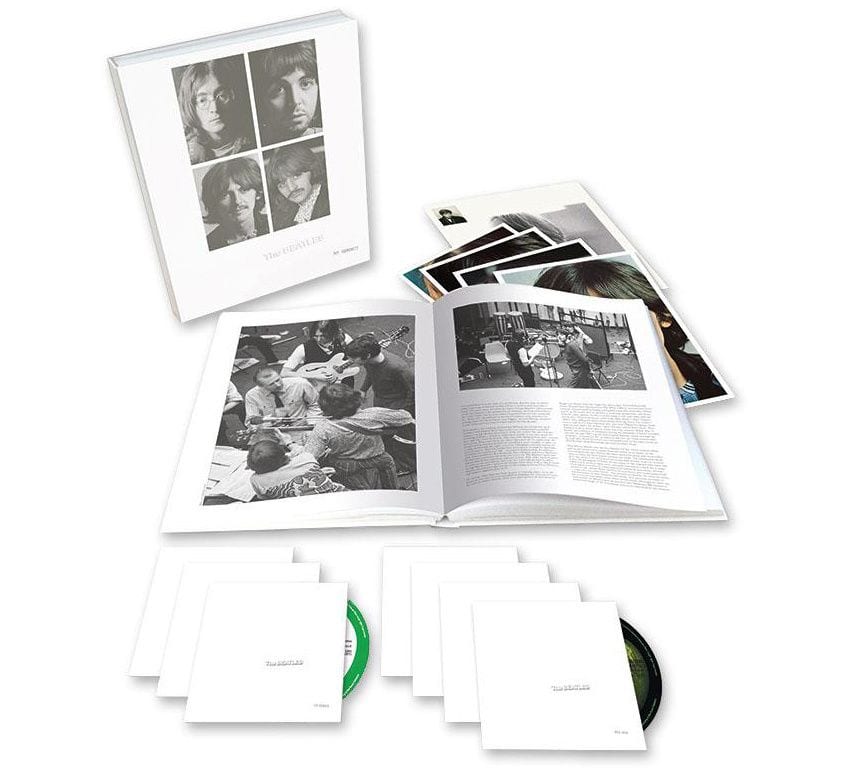
Beatles fans had a field day with last year’s 50th anniversary deluxe reissue of Sgt. Pepper’s Lonely Hearts Club Band, but 2018 brought what the more obscure fan had really been waiting for – a full-on, super-deluxe edition of the strangest, most self-indulgent and perhaps most complete Beatles album ever made during their tremendous eight-year recording run. “The White Album” – officially titled simply The Beatles – was the sound of the band’s slow-motion breakup. Personalities were clashing, arguments were heated, and several of the songs were recorded solo.
The result is an album filled with a variety of styles, from the Beach Boys-inspired glee of “Back in the U.S.S.R.” to the visceral gut punch of “Yer Blues”, from the gentle acoustic folk of “Mother Nature’s Son” to the brass-infused funk of “Savoy Truffle”. And that’s not even counting the epic, polarizing sound collage “Revolution 9”. All 30 tracks are expertly remixed, giving them a welcome sonic punch. Ringo has never sounded better, and harmonies are more clearly focused. The voluminous bonus material includes the famous Esher demos, alternate takes, and early versions of songs that would end up on later Beatles albums (“Let It Be”, “Across the Universe”) as well as solo albums (Geroge Harrison’s “Not Guilty”, John Lennon’s “Child of Nature”, which was eventually rewritten as “Jealous Guy”). An essential document of one of the most important rock albums of all time. – Chris Ingalls
LISTEN: Spotify | WATCH: “Back in the U.S.S.R.” / “Glass Onion”
- The Best 20 Re-Issues of 2010 - PopMatters
- The Best Re-Issues of 2008: 10-1
- The 25 Best Re-Issues of 2011 - PopMatters
- The 20 Best Re-Issues of 2012 - PopMatters
- The Best Re-Issues of 2008 - PopMatters
- The Best Re-Issues of 2009 - PopMatters
- The 25 Best Album Re-Issues of 2016 - PopMatters
- The 21 Best Album Re-Issues of 2017 - PopMatters
- The Sentimental Journey of John Lennon's "Imagine" - PopMatters
- The 20 Best Album Re-Issues of 2020 - PopMatters

